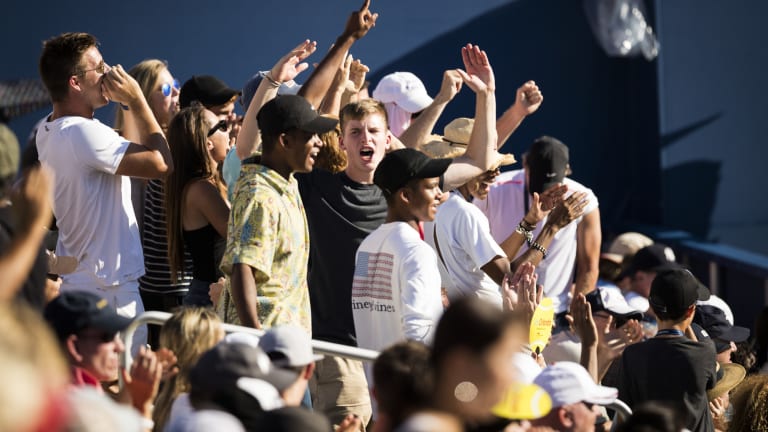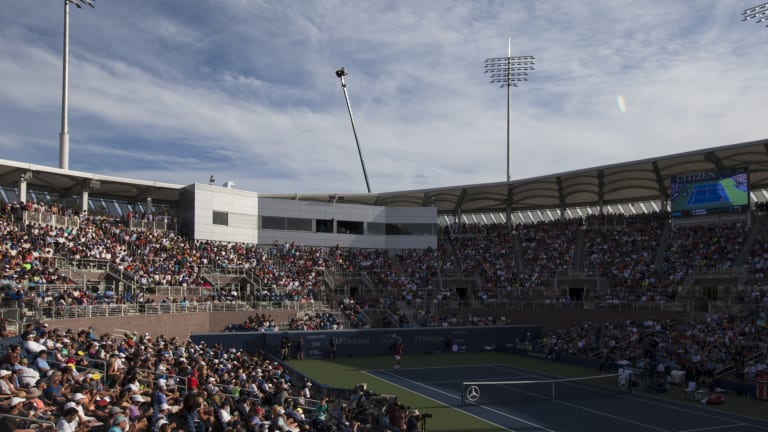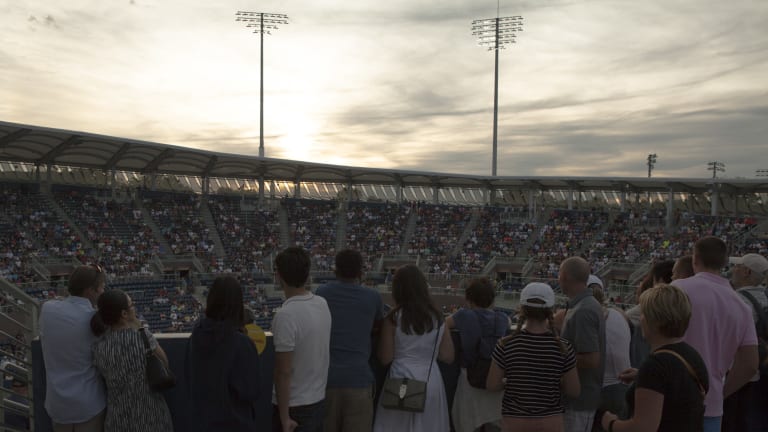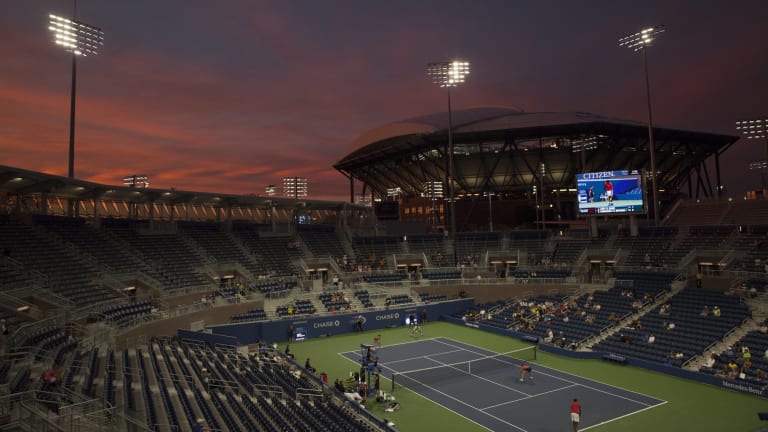NEW YORK—“Let’s go, Frances!” a woman in the 10th row cries. She doesn’t say it loudly enough for her player of choice, 18-year-old Frances Tiafoe, to hear her, but it’s the thought that counts, right? “He’s improved so much,” she gushes, mostly to herself.
As she speaks, she also whips a small, yellow fan back and forth in front of her face. The air on this late-August afternoon at Flushing Meadows is stingingly humid, and her yellow fan is just one of hundreds, maybe thousands, of others that buzz back and forth around the bleachers. If nothing else, the U.S. Open’s new arena—the freshly constructed, 10,000-seat Grandstand—is off to a hot start on its first day.
A hot start, and a complicated one. In the afternoon’s featured match, the U.S. crowd is faced with a choice: Do they back Tiafoe, a Maryland native, or his opponent from North Carolina, John Isner?
The match-up is all contrasts: 18-year-old baseliner vs. 31-year-old ace machine, 6'2" vs. 6’10", white vs. African-American. By the second set, there’s a split among the fans, not just in their loyalties, but in the way they express them. The Tiafoe supporters, who are in the majority, band together to chant “Fran-ces!”; they’re rooting for the new face. Isner’s backers, who are fewer and farther between, do their best to make up for it by bellowing, “Let’s go, Johhhhnnnn!” from the far reaches of the stadium. In its mix of unity and division, America’s newest tennis court feels a little like America itself in this hotly contested summer of 2016. And while the Grandstand is only a few hours old, it already feels right at home at the Open.



